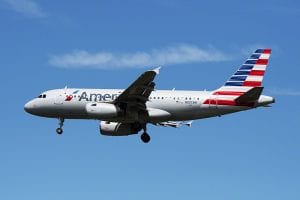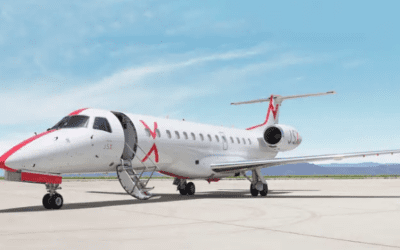It’s impossible for parents while flying to hold lap children safely during severe turbulence. It’s long overdue. The FAA to stop permitting “lap children” on planes.

That incident is a serious safety violation of Federal Aviation Administration (FAA) Regulation §135.128. Only children less than two years of age can be “lap children” passengers on planes flying in, to, or from the US. Everyone from two years old and older, including children, must be seated in their own seats on airplanes. Flight attendants aren’t permitted to allow anyone to violate FAA safety regulations.
While the FAA still permits parents to hold children under two in their laps on planes, they don’t recommend it.
In addition, FAA regulations permit children under two years of age to become lap children. Kids without their own seat sit on their parent’s lap. The FAA recommends against lap children passengers stating,
“The safest place for your child under the age of two on a US airplane is in approved child restraint system (CRS) or device, not on your lap.”
On a recent flight to Philadelphia on American Airlines, I noted several children were flying in their parent’s laps. In fact, on most flights I’m on, I see “lap children,” and I shake my head, knowing the potential danger they’re putting their children into. At this point, I’ll bet that some parents or grandparents of infants may ask, “What’s the big deal?,” so let’s look into the problem of “lap children” on airplanes.
During severe turbulence, no one can safely hold a child in a plane.
In a word, the problem is turbulence. According to the FAA, turbulence is the top cause of pediatric injuries on airplanes. Had severe turbulence occurred on the flight discussed above, with the mother having her two-year-old in her lap, the child would likely have been severely injured. It’s even possible that the child would have died from the injuries.
As the FAA states in the Flying with Children section of their website,
“Your arms aren’t capable of holding your in-lap child securely, especially during unexpected turbulence, which is the number one cause of pediatric injuries on an airplane.”
Permit me to repeat what the FAA has said. No one can hold a child securely when unexpected severe turbulence hits an airplane.
There is rarely any warning of severe turbulence on planes. When there is a warning, it’s typically only a moment or two at best.
Turbulence is air movement that typically can’t be seen. It often occurs with no warning. Atmospheric pressure, jet streams, and the topography of the land beneath the plane, particularly mountains, weather fronts, or thunderstorms, can all cause turbulence. Turbulence can occur when the sky around the plane appears to be clear.
While flying, I’ve experienced turbulence many times, but I’ve encountered severe turbulence just once. That was more than enough. Fortunately, the captain received a report of the turbulence ahead of us and directed passengers and crew to sit down and buckle up.
While no one was seriously injured, some were bloodied when latched overhead bin doors opened due to the severe turbulence. Bags and laptops flew out, some bloodying passengers and crew. Had any passengers been holding an infant, it’s doubtful the child would have survived. Fortunately, there were none on the flight.
Every year in the US, about 58 people are injured, some severely, due to severe turbulence.
According to the FAA, each year, approximately 58 people in the US are injured by turbulence while not wearing their seat belts. In-flight turbulence is the leading cause of non-fatal injuries to airline passengers and flight attendants. Sometimes severe turbulence kills. From 1980 through 2008, US commercial air carriers had 234 turbulence accidents, resulting in 298 serious injuries. Among those injured were 184 flight attendants and 114 passengers. The accidents also resulted in three fatalities. So many more flight attendants than passengers are injured because they don’t wear seat belts while working on their flights. Two of the three fatalities were passengers who weren’t wearing their seat belts, despite the seat belt sign.
Air passengers must realize that turbulence is often unpredictable, and pilots don’t get much warning about it. No technology, including radar, can detect severe turbulence at this time. However, Lidar, a detection system that uses a pulsed laser beam, has shown great promise. At this time, pilots have a general warning, at best.
A published study predicts a large future increase in severe turbulence incidents affecting planes due to climate change.
In a 2017 study published in Advances in Atmospheric Sciences, scientists from the University of Reading determined that severe aircraft turbulence could increase by 149 percent in the coming years due to climate change. I note that the world has been seeing major weather changes in recent years.
Since 1990, the U.S. National Transportation Safety Board (NTSB) has recommended that the FAA,
“Revise 14 CFR 91, 121 and 135 to require that all occupants be restrained during takeoff, landing, and turbulent conditions, and that all infants and small children below the weight of 40 pounds and under the height of 40 inches be restrained in an approved child restraint system appropriate to their height and weight.”
While the FAA recommends the measures outlined by the NTSB, it has remained resolute in exempting children under two so their parents can save the cost of their fares.
Parents need to buy separate tickets for their young children and put them in a CRS.
What should the mother of that two-year-old, discussed above, have done? The mother should have purchased a separate ticket for her child and seated the child in a government-approved Child Restraint System (CRS) child safety seat.
Airline crew members must enforce FAA safety rules for lap children on their flights.
What should the flight attendant have done when told the lap child was two years old? The flight attendant should have told the mother that her child couldn’t fly unless seated in a CRS in a separate seat. She should have sent her off the plane with her child to safely fly, not look the other way.
What should airlines do about the problem of over-age lap children flying on their planes? The airlines must train their flight crew never to allow children to be improperly seated on their planes and hold flight crew members who don’t enforce the FAA safety rules fully accountable for children seated on their flights.
It’s time for the FAA to follow the 1990 NTSB recommendation to eliminate lap children.
What should the FAA do about the widespread problem of lap children? While it will cost more for infants’ parents, those children’s safety is far more critical. As per the 1990 NTSB recommendation, the FAA should immediately begin to require that every passenger on an airplane, regardless of age, have a seat and that all children who are less than 40 inches tall and weigh less than 44 pounds should be seated in their seat in an appropriate CRS.
(Image: American Airlines A319 landing at Philadelphia International Airport. Copyright © 2018 NSL Photography. All Rights Reserved.)
After many years working in corporate America as a chemical engineer, executive and eventually CFO of a multinational manufacturer, Ned founded a tech consulting company and later restarted NSL Photography, his photography business. Before entering the corporate world, Ned worked as a Public Health Engineer for the Philadelphia Department of Public Health. As a well known corporate, travel and wildlife photographer, Ned travels the world writing about travel and photography, as well as running photography workshops, seminars and photowalks. Visit Ned’s Photography Blog and Galleries.



